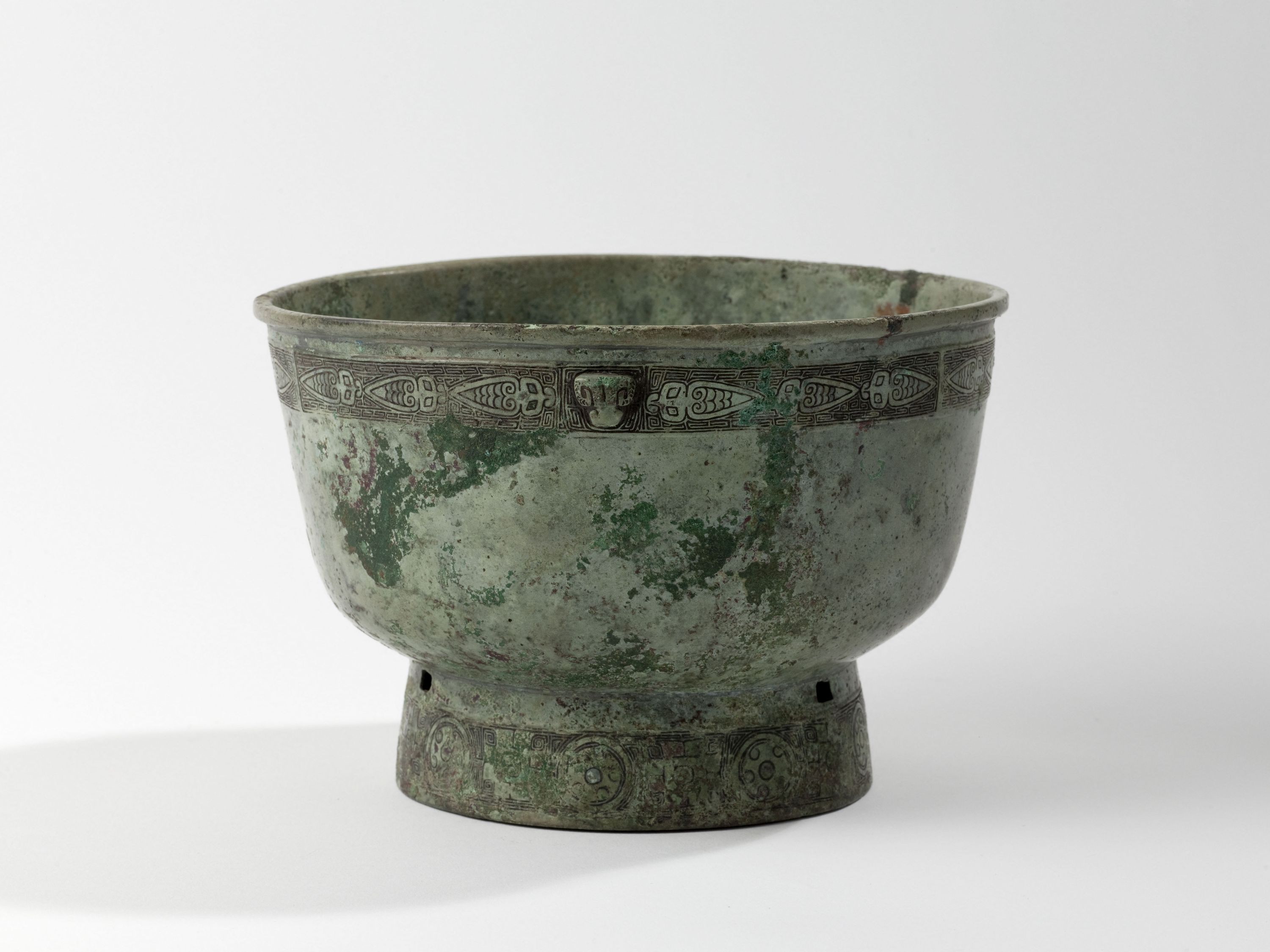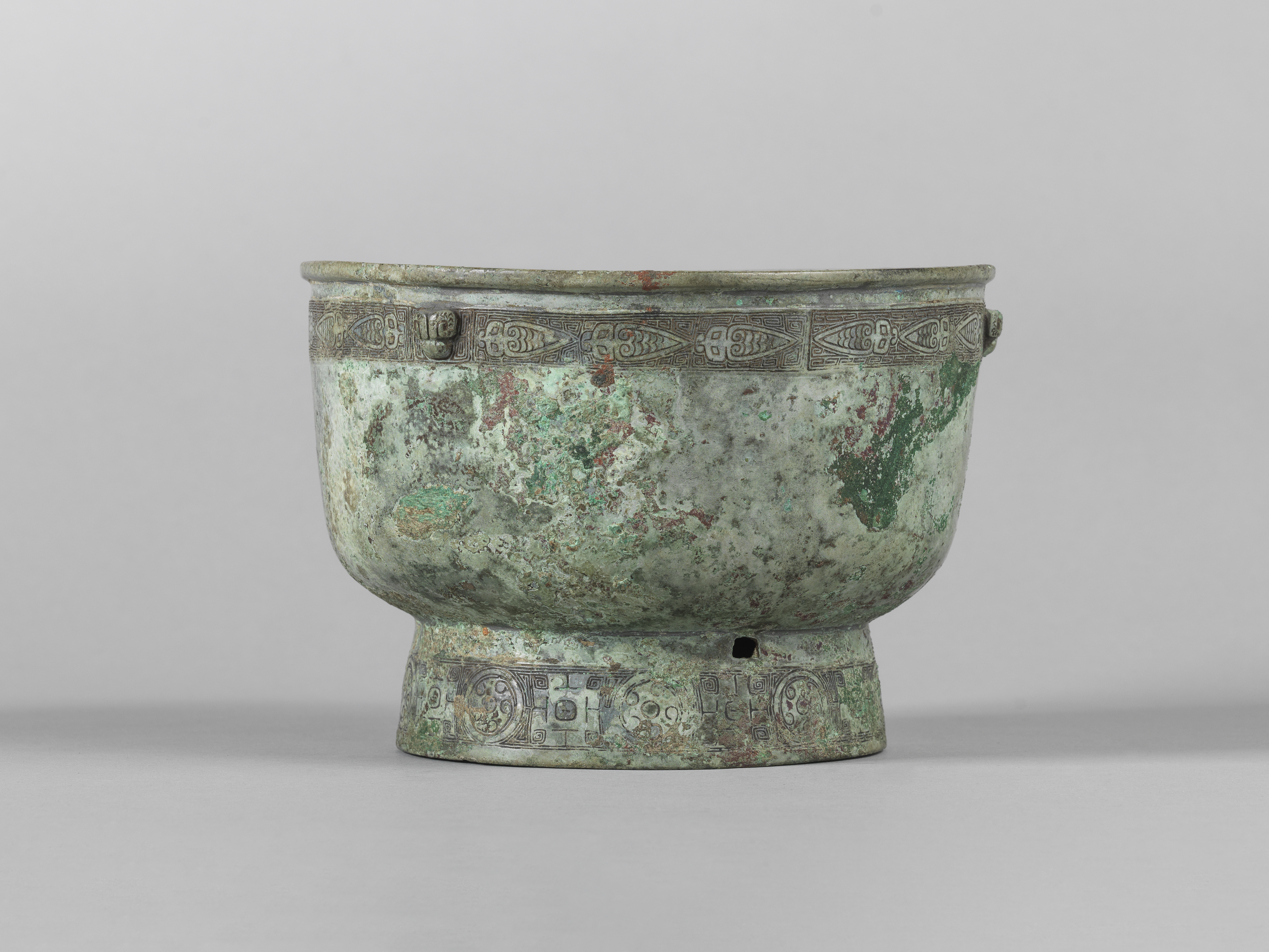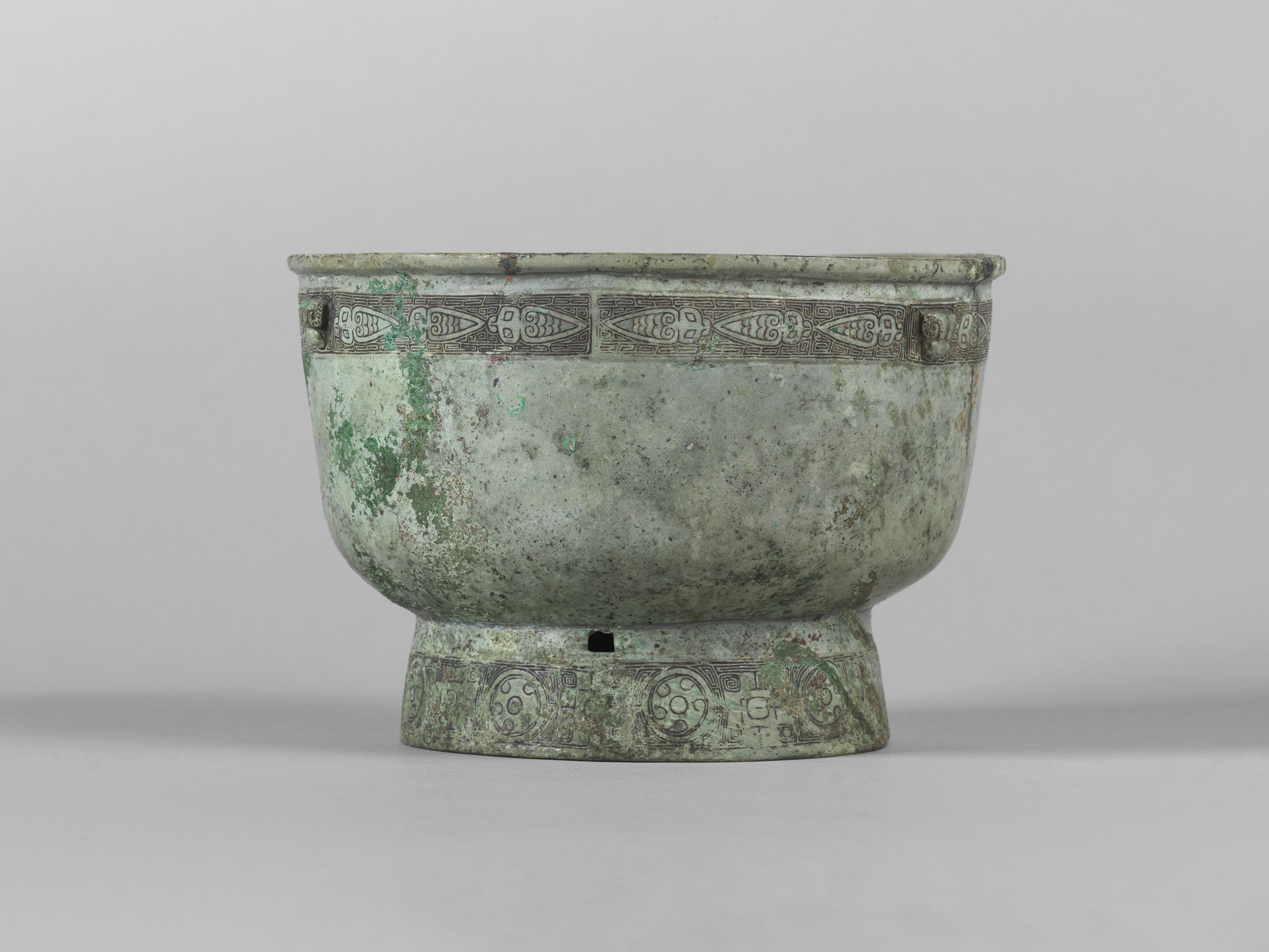
Vase yu 盂
Bronze, Fonte, Fonte au moule
Vaisselle et ustensile de cuisine, Vase
Achat avec participation : Société des Amis du musée Cernuschi
M.C. 9227
This very plain bowl first appeared in a publication by Max Loehr in 1968, on the occasion of the famous exhibition Ritual Vessels of Bronze Age China.
The yu form, the simplest of all Shang-period bronzes, originates in Neolithic pottery. In the Shang period, similar bowls in ceramic were found in Anyang and Zhengzhou. The absence of a handle distinguishes this yu from a gui, but both were designed to contain cereals. The foot has a wide band of whorls alternating with square motifs in crescents. Above it, small square openings are often interpreted as serving to hold the piece in the mould during casting. The band around the top of the bowl features three animal heads in relief, flanked by six cicadas arranged symmetrically; their precise design stands out clearly over a ground of multiple interlinked leiwen.
Vadime Elisseeff, Bronzes archaïques chinois au musée Cernuschi, vol.1, t.1, n°23, Paris, L'Asiathèque, 1977, p.68.




